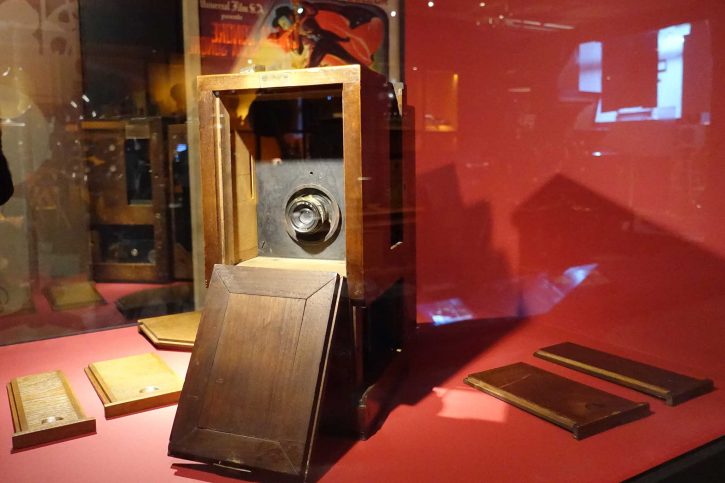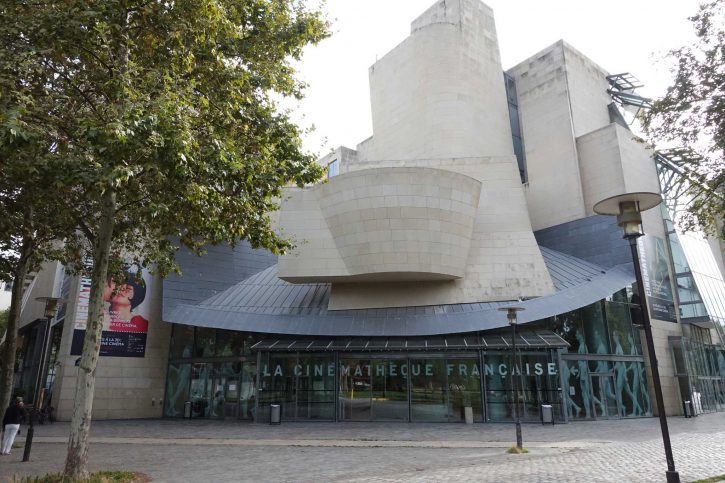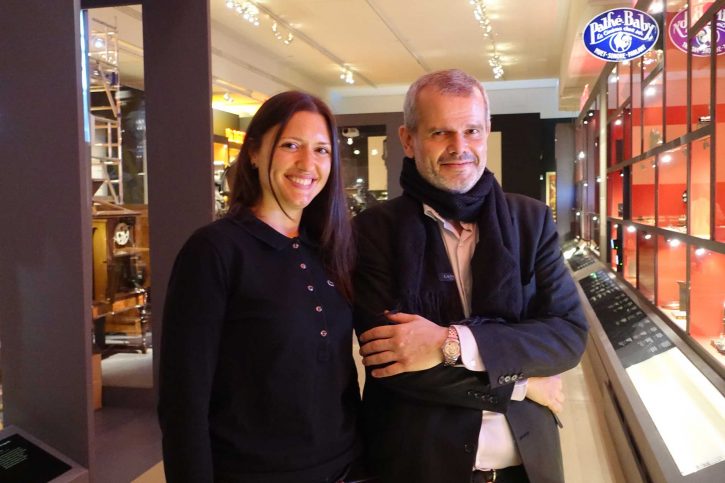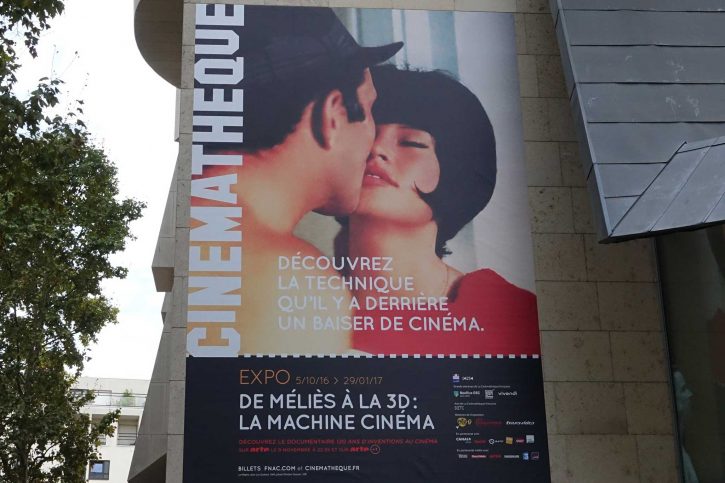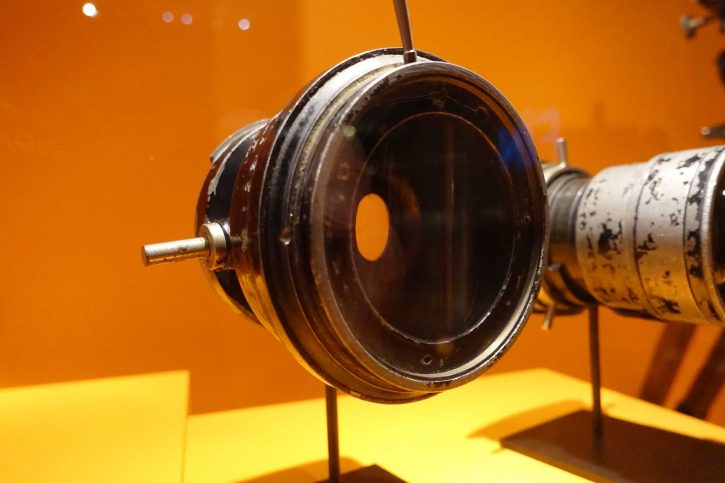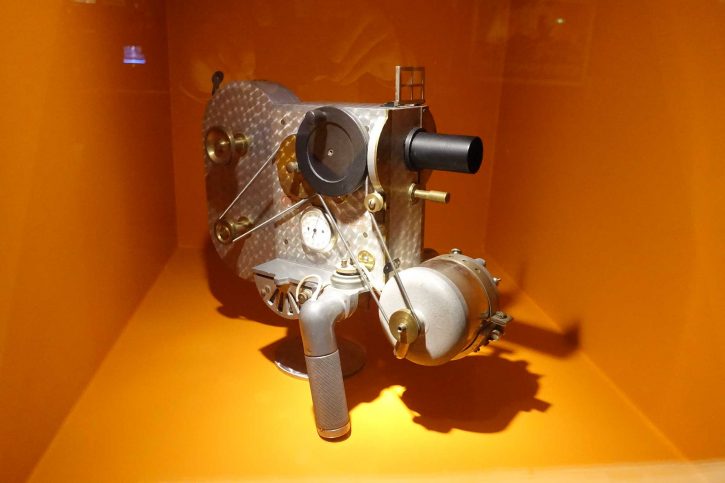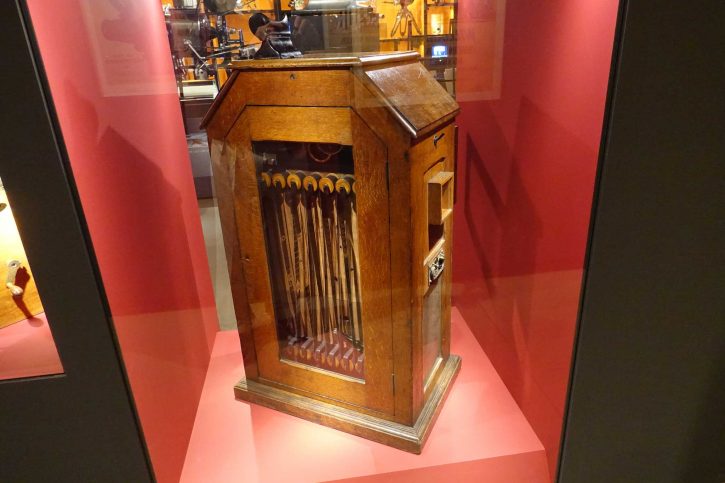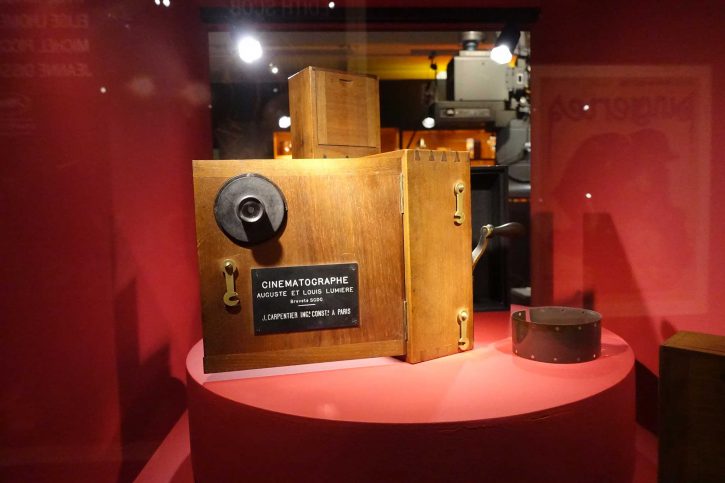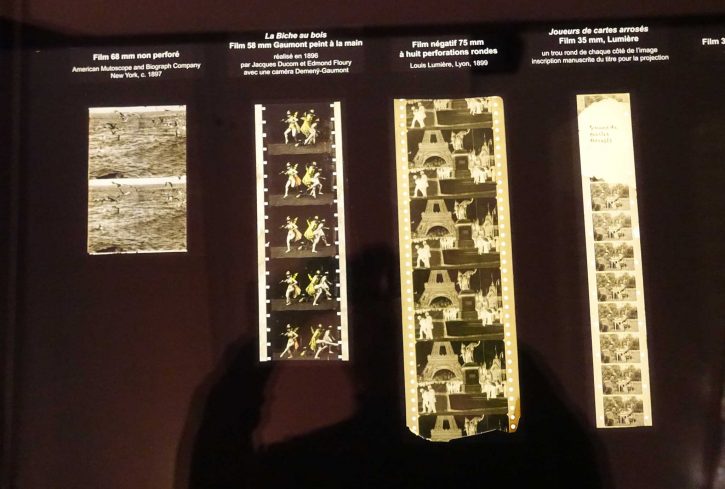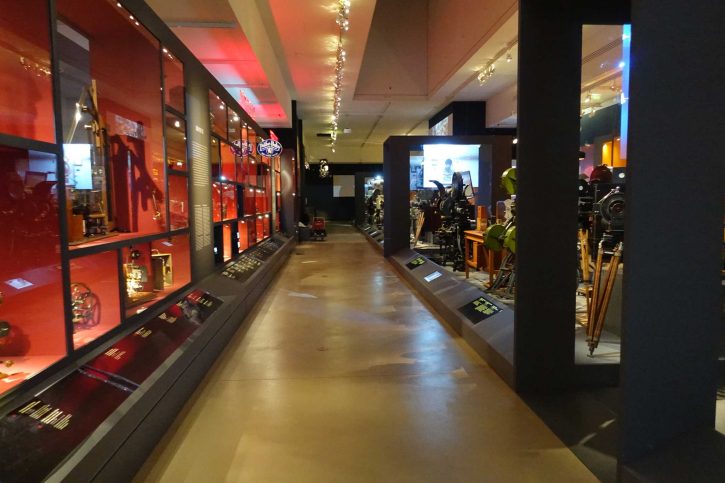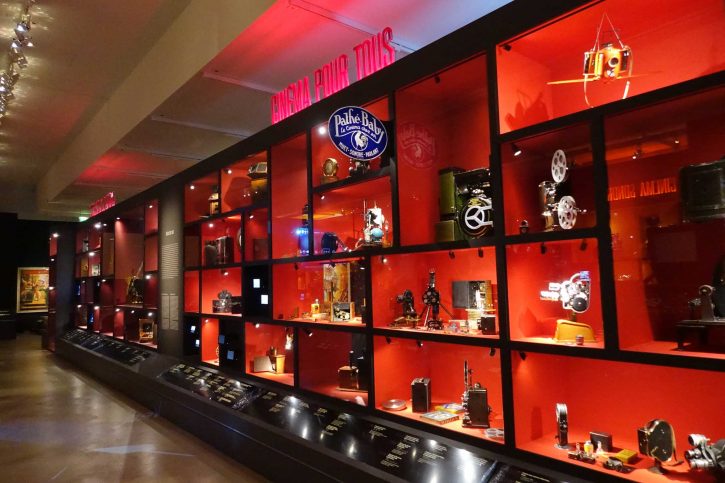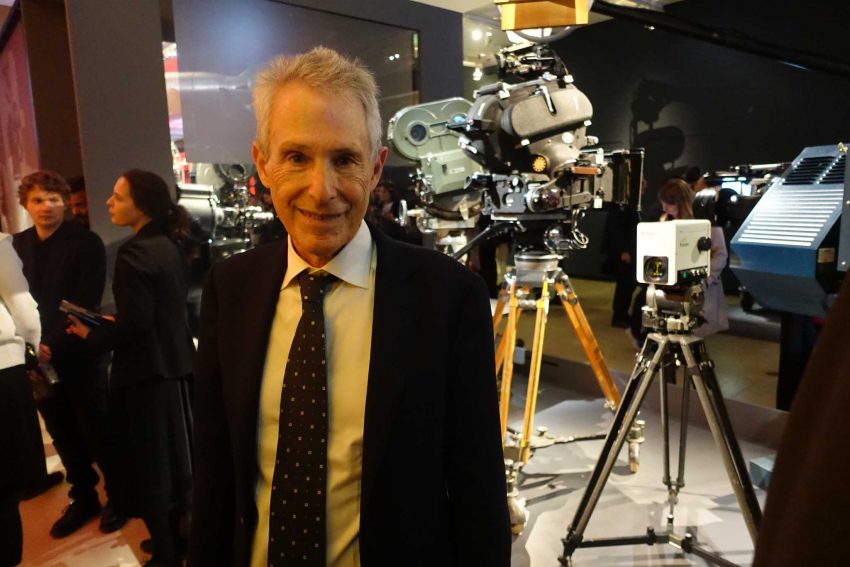Camera and lens designers, cinematographers, directors, rental managers, producers–plan a trip to the French Cinematheque in Paris.
This is the most important, historical exhibition about the technique and technology of cinema from October 6 – Jan 29, 2017.
Any questions about format, ergonomics, shape, pristine vs distressed images are revealed here. Larger formats? Two years after the birth of 35mm cinema, we see a 68mm camera, quickly followed by 58mm and 75mm.
The Bercy neighborhood was once the largest wine market in Europe, with streets named Cour Saint Emilion and Rue de Pommard. Now it’s home to the French Cinematheque, designed by Frank Gehry, and the streets nearby are suitably named rue Francois Truffaut and rue Jean Renoir.
Twelve tons of equipment from the Cinematheque’s vast storage area nearby were gingerly transported to the exhibition space. The title of the show is “From Melies to 3D, the Machines of Cinema.”
I asked Cinematheque Technical Director Laurent Mannoni why Melies and not Lumiere? Laurent said, “The first piece of equipment you see on display in the exhibition is the first camera of Georges Melies, built in 1896. It entered our collections in 1939. Méliès was a genius of technical matters and special effects. He was the first one to understand the importance of the specatacle of film. Lumiere documented the real world; Méliès reinvented it. Thanks to the technique and technology.”
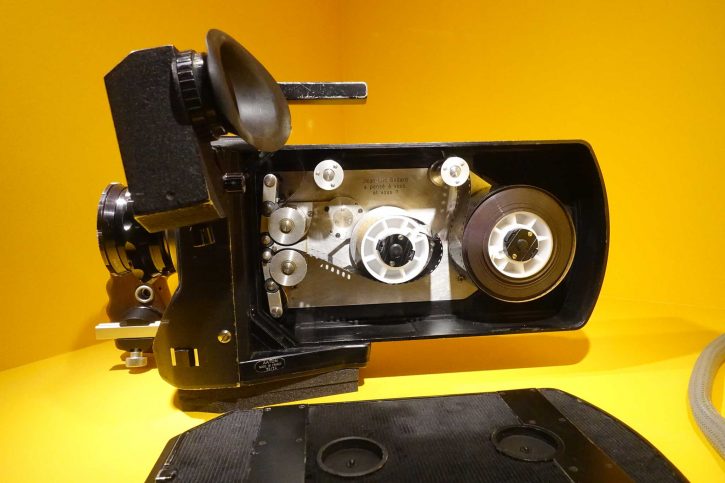
Aaton 35 developed by Jean-Pierre Beauviala for Jean-Luc Godard. The inscription inside enigmatically reads, “Jean-Luc Godard thinks of you. And you?”
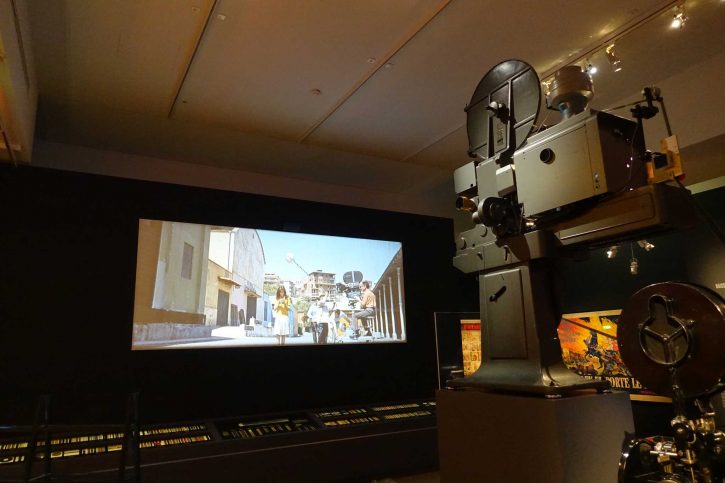
As you enter the exhibit, the magnificent opening scene of Godard’s “Le Mepris” (“Contempt”) plays in an endless loop, projected in glorious widescreen on a film projector. At the opposite end of the exhibition hall, there’s a 4K digital projection.
Excerpts of a discussion with Laurent Mannoni:
Jon Fauer: Since you have so many “machines” in your collection, was it difficult mnaking the selection for the exhibition?
The exhibition traces the main laps in the evolution of technique and technology: Marey, the Kinetoscope, Lumiere, Vitaphone, Technicolor, Todd AO, the Steadicam, digital… One has to make the first choices. Then we wanted to show the curious and amazing devices that were not necessarily successful from a technical, industrial or artistic point of view, but still represented interesting initiatives: the Viosonola, the Chronomegaphone the firstBaird Television (1930), the Nipkov disk. In any case, the choice is difficult because we have 6000 machines in our collection and we want to honor some large manufacturers still in business, some for a long time: Panavision, ARRI, Aaton, Transvideo, Louma.
Why did you decide to show my favorite film about filmmaking, “Le Mépris?”
First of all, it’s a masterpiece. Then it’s a film shot in Scope. Then it is in color. Then it was Godard. Then it’s the genius Raoul Coutard doing the cinematography. Then it’s a film about film, beautifully made, and we see Fritz Lang, my favorite filmmaker. Brigitte Bardot is beautifully filmed. And watch it–the film is projected in 35mm in the exhibition.
What do you hope will happen after people see this exhibition? Understand the relation between technique and technology?
This is the challenge. We want to remind people that the cinema is a highly technical art and that the tools of cinema determine the shape of the film.
Is there a chance this exhibition could travel to other countries? A permanent “home”?
We present 12 tons of equipment! Of course, we would like the exposition to travel, as this is the first time that this topic is explored in depth. We also dream of having a great, permanent museum of cinema equipment in France. This will happen soon, for sure!

